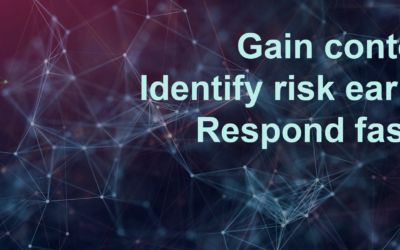“Oh good, more alerts”
Tools monitor, alert, and refine. Analysts aggregate, analyze, and file a ticket. The cycle continues. Burnout continues. Turnover in the SOC continues. Upleveling analysts takes time. The SOC spends more time using the tools they have than benefiting from them. This is the status quo for many.
Time to change: same alerts, less humans, more risk reduction
The status quo is now easily challenged.
You can use your existing tools to continuously map your attack surface and trigger remediation for gaps in security controls such as EDR agents without requiring human management and engagement. This outstanding futuristic fiction is now a reality that reduces your risk, reduces wasted resources, and puts your SOC in a position to focus on proactive security. If it sounds too good to be true, it’s because it’s novel. But we built it because we disliked wasting our time on manual analysis and filing tickets in the SOC.
The missing requisite of Cybersecurity Mesh
We didn’t purposefully build something that fits into an acronymized category, but it does align with our vision for cybersecurity in the future. Cybersecurity mesh architecture is a concept that emphasizes the need for interoperability between network and security services. Through this meshing of existing tools, organizations can realize a 90% reduction in costs associated with breaches. This is an attractive concept for enterprise IT and security teams because attack surfaces can be monitored and reduced without reliance on human intervention. The lack of human intervention means less time and money for people. It also means that all your existing tech stack interoperates to identify risk and reduce it to demonstrably increase ROI.
The historically missing element is the establishment of a centralized data plane. A centralized data plane that serves as a hub that connects all the different pieces of your IT and security tools. Despite disparate data sets, and different formats of data, all from tools used by different teams, a centralized data plane normalizes everything while eliminating these obstacles. All of your tools’ data is contextually converged and easily searched across. This helps to reduce complexity caused by the adoption of different networks and tools, provides total visibility across the network, and streamlines security processes. When we have accurate and relevant results, security teams can identify risk earlier and respond faster. But they shouldn’t spend time on mundane aspects like EDR agent coverage.
Closing the remediation loop
The concept of “closed loop remediation” is why we built Actions. Gain total asset visibility. Automate security control validation. Close the loop on response with Actions. The outcome is less wasted resources on projects and optimal ROI on existing security tools. But perhaps the most significant benefit to organizations on the macro level is an automatically mapped and reduced attack surface.
Automating tedious tasks frees up cybersecurity teams to focus on more important tasks, such as threat hunting and network dependency mapping for better prioritization and avoidance of network outages.
If you’re ready to uplevel the SOC, automate tedium, and grow capability without increasing personnel, start using appNovi today by signing up here. Or watch the video below to better understand how this works and benefits the enterprise.


